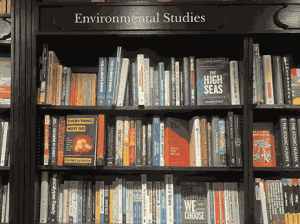We at Book Industry Footprint face the environmental issues of publishing head-on. Books are very important for culture and education, but the way they are made has had a big impact on the environment in the past. The woods that give us paper, the energy that runs our presses, and the fuel that moves our books all have an effect on the environment at every point of their journey. The first step toward making the literary world really sustainable is to understand this footprint.
Knowing How We Affect The Environment
The Paper Trail: Using Resources and Cutting Down Trees
A piece of paper that makes up an actual book is often the portion that hurts the environment the most. The traditional way of creating paper uses a lot of natural resources. The system uses a lot of resources, making greenhouse gases worse and puts a lot of stress on the environment. So when a virgin paper pulp is used to create books, there will be a need for trees, speeding up deforestation. As a result it will destroy the forest habitats important for plants and animals as they depend on them.
Carbon Emissions: From Making to Reading
The whole life cycle of a book, from its raw materials to its finish, leaves a big carbon impact. The process of printing uses a lot of energy. A book’s overall carbon footprint can be higher due to traditional printing methods use power made from fossil fuels. In addition to the presses, facilities need energy for lighting, cooling, heating, and other day-to-day tasks. Depending on a number of things, the average emissions for making one book can be very different. This multi-stage transit procedure adds a lot of carbon emissions, especially when you think about how many copies are returned that weren’t sold.
The Unseen Expenses of Waste and Death
You should also think about what happens to books once they leave the store because they can hurt the environment. A lot of things are made too much in this field. Every year, a lot of the books that are produced don’t sell. You can recycle most paper, but some parts of books can’t be used again. This could make it tougher to recycle or even make it impossible to recycle whole volumes. This implies that even if people try, many books still end up in trash streams that don’t be cleaned up, which keeps the process of diminishing resources and landfill growth going.

Conclusion
The Book Industry Footprint makes it plain how much damage our love of books contributes to the planet. The first and most important thing to do about these environmental concerns is to know about them. The publishing industry could make meaningful headway toward more environmentally friendly practices if it admitted that using too many resources, releasing too much carbon, and making too much trash are all concerns. Working together and understanding each other may help the sector move closer to a future that is better for the environment. It’s a call for everyone in the book business to help make the future of publishing more environmentally friendly.
Read sustainably — every page makes a difference.
https://www.ecolibris.net



